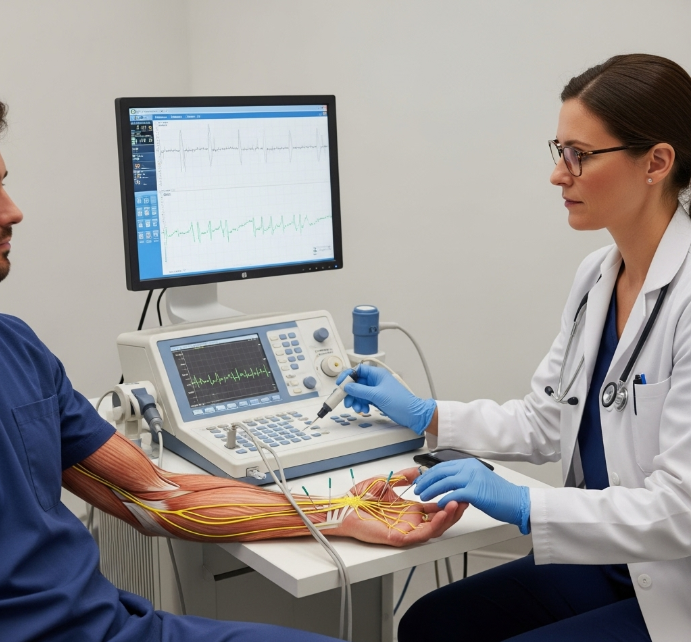Guillain-Barré Syndrome (GBS) can dramatically alter your life, especially when it affects your ability to perform
everyday tasks. GBS-related weakness can make everyday tasks like writing and dressing difficult. Imagine
struggling to prepare a simple meal, the frustration of not being able to button your shirt, or the challenge of
using a phone. These limitations can lead to significant frustration and a sense of loss. But there's hope. Let's
explore how an innovative approach, EMG biofeedback, empowers you to reclaim your independence and actively
participate in your recovery journey.
Understanding Fine Motor Skill Impairment in Guillain-Barré
Syndrome
GBS often leads to weakness in the hands and fingers, directly impacting fine motor skills. This can manifest
as difficulty with precise movements, reduced dexterity, and an overall loss of control. Understanding these
impairments is crucial for finding effective solutions to improve independence and quality of life.
EMG Biofeedback: A Physiotherapy Solution for GBS-Related
Hand Weakness
EMG biofeedback is a cutting-edge physiotherapy technique that helps you regain control over your muscles. It
involves using sensors to monitor muscle activity and provide real-time feedback, allowing you to become more
aware of how your muscles are working. This heightened awareness is key to retraining muscles weakened by
GBS. By seeing or hearing the signals from your muscles, you can learn to consciously activate and coordinate
them more effectively. This is a crucial step in improving fine motor control. EMG biofeedback GBS empowers
patients to actively participate in their rehabilitation.
How EMG Biofeedback Works: Retraining Muscle Control After
GBS
Your physiotherapist will place sensors on your skin over specific muscles involved in fine motor movements.
These sensors detect the electrical activity produced by your muscles and transmit this information to a device
that provides real-time feedback. This feedback can be visual, such as a graph on a screen, or auditory, such as
a tone that changes in pitch or volume. As you attempt to perform a specific movement, like gripping an object
or writing, you receive immediate feedback on your muscle activity. This allows for subtle adjustments, improving
control and coordination. Over time, this process helps to "rewire" the neural pathways involved in motor control,
leading to lasting improvements in finger dexterity.
Benefits of EMG Biofeedback in GBS Recovery: Regaining Hand
Function
The benefits of EMG biofeedback in GBS recovery are numerous. It can lead to increased hand rehabilitation
GBS, improved grip strength, and enhanced dexterity, making everyday tasks more accessible and improving your
overall quality of life. For those struggling with handwriting difficulties post-GBS, EMG biofeedback, as applied
by a physiotherapist, can be particularly helpful in regaining the ability to write legibly and comfortably. Moreover,
EMG biofeedback empowers you to take an active role in your recovery. By actively participating in the retraining
process and seeing tangible progress, you can regain confidence and motivation.
EMG Biofeedback Integrated into Comprehensive GBS Rehabilitation
EMG biofeedback is most effective when integrated into your comprehensive, personalized rehabilitation program.
This program may include other therapies such as occupational therapy and targeted exercises. The integration
of these therapies ensures a holistic approach to your recovery. Consider the use of devices like PhysioEmg and
the potential for remote physio sessions to further enhance your rehabilitation journey. Physiotherapy for GBS
often involves a combination of approaches to address the various challenges associated with the condition.
Conclusion
EMG biofeedback, a physiotherapy technique, offers a promising path to regaining fine motor skills after GBS. By
providing real-time feedback and empowering you to actively participate in your rehabilitation, this technique can
lead to significant improvements in hand function, dexterity, and overall quality of life. Remember, you're not alone
in this journey. If you're ready to explore how EMG biofeedback can help you reclaim your independence, reach
out to a qualified physiotherapist to learn more.
